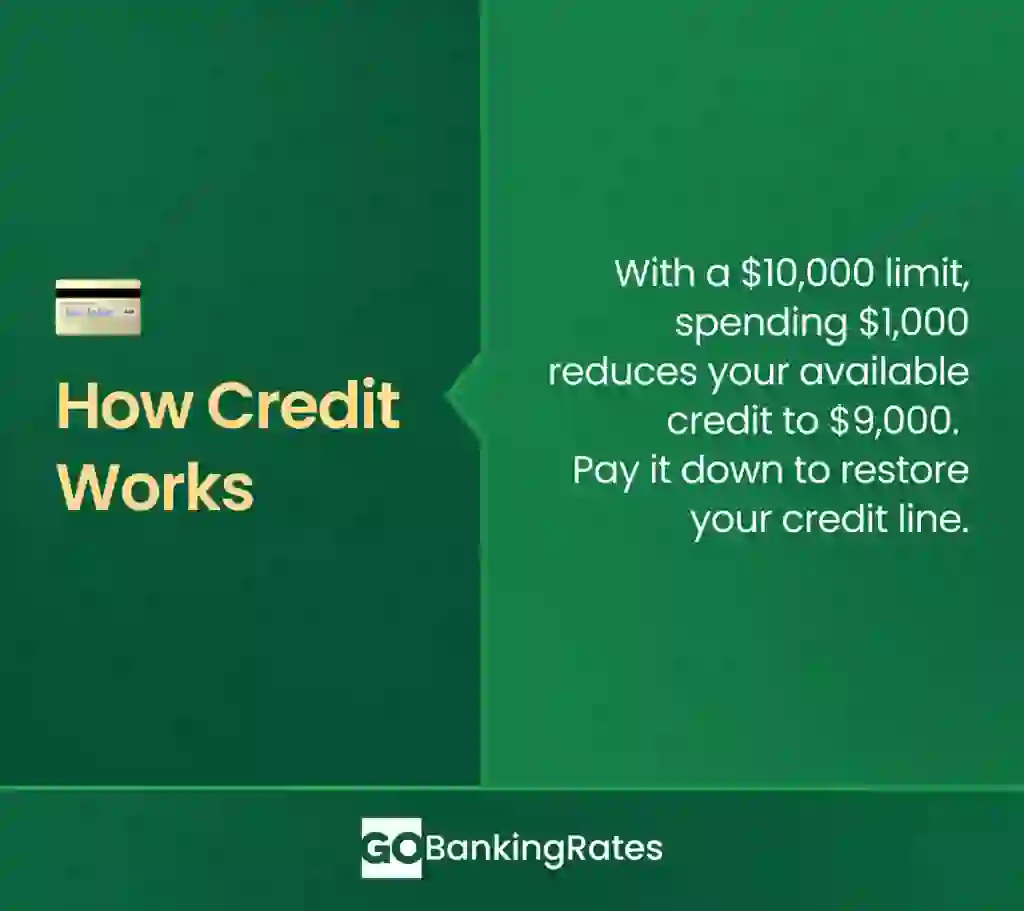Personal Loan vs. Credit Card: What’s the Difference?

Commitment to Our Readers
GOBankingRates' editorial team is committed to bringing you unbiased reviews and information. We use data-driven methodologies to evaluate financial products and services - our reviews and ratings are not influenced by advertisers. You can read more about our editorial guidelines and our products and services review methodology.

20 Years
Helping You Live Richer

Reviewed
by Experts

Trusted by
Millions of Readers
A personal loan is a one-time sum of cash that the bank gives to you upfront. A credit card is not cash, but a revolving access to funds for everyday spending.
Trying to decide between a personal loan vs credit card? They’re both types of personal loans in a way, but with big differences. Here’s how to decide which is right for you.
Key Differences Between a Personal Loan and a Credit Card
Personal loans and credit cards result in a similar outcome but through different avenues: They let you spend the bank’s money with the expectation that you’ll pay it back. With both personal loans and credit cards, you’ll typically pay less interest the faster you pay off your debt.
Here’s a quick overview of what to expect from a credit card vs. personal loan.
| Feature | Personal Loan | Credit Card |
|---|---|---|
| Funds received | Upfront lump sum | Revolving credit line |
| Interest type | Fixed APR, usually | Variable APR |
| Collateral required? | Sometimes | Sometimes |
| Best for | Large expenses | Ongoing purchases |
| Credit needed | Varies | Varies |
| Common uses | Home improvement, debt consolidation, medical expenses | Everyday expenses |
What Is a Personal Loan?
A personal loan is a type of “installment loan,” offered at most banks and credit unions. When you take out a personal loan, the lender will give you the money you need upfront. You’ll then be put on a monthly plan to pay back the money along with interest.
There are certainly pros and cons to a personal loan, but they’re superior to credit cards when it comes to large expenses like a home improvement project, wedding or even a vacation. That’s because the annual percentage rate (APR) they charge is often much lower.
What Is a Credit Card?
A credit card is a revolving credit line offered by most banks and credit unions. It’s not delivered as cash, like a personal loan. Instead, it’s an amount of money the bank is willing to spot you for purchases at once.
How Does a Personal Loan Work?
When opening a loan for a large expense, the money you borrow will often be deposited into your bank account — though when you consolidate credit card debt, the bank may pay off your balances directly.
You may take out a $10,000 personal loan with a 48-month term and a 13.99% APR. You’ll then be set up with 48 equal monthly installments of $273. By month 48, you’ll have paid $13,104 — the $10,000 you borrowed plus interest.
How Does a Credit Card Work?
When you open a credit card, you’ll be given an initial credit limit. If you attempt to spend more than your available limit, very likely your purchase will be declined. The bank may later raise this limit if you show trends of healthy credit usage.
While it does technically allow you to pay off your balance in installments, it’s not considered an installment loan — and you shouldn’t use it that way.
Credit card interest rates are often sky-high, meaning you’ll pay considerably more in interest from a credit card than if you financed a large purchase with a personal loan.

Pros and Cons of Each Option
Personal Loan Pros
- Receive cash upfront
- Predictable monthly payments
- Often much lower interest rates than credit cards
Personal Loan Cons
- Interest is impossible to avoid
- Some financial institutions charge origination fees
- No flexibility in repayment terms after the account is open
Credit Card Pros
- Allows you to occasionally float purchases when necessary
- Recoup the ability to borrow money after you pay down your balance
- Earn rewards for spending
Credit Card Cons
- Generally much higher APR
- Increased APR for activities like cash advances and late payments
- Risky for impulse buyers
How To Apply for a Personal Loan or a Credit Card: 3 Steps To Take
The process of applying for a personal loan or a credit card is very similar. The bank generally wants to know the same type of information, such as your debt-to-income ratio, credit score, etc. Here’s a quick step-by-step:
1. Check Your Credit Score
Some lenders and credit cards demand a specific credit score range. You’ll have the most options if your credit score is at least 670. Make sure you don’t apply for a loan or card that only considers scores higher than yours.
2. Gather Necessary Documents
You’ll need to enter personal information when applying for a loan. This might include:
- Your Social Security number
- Street address
- Annual household income
- Pay stubs
- Photo ID
- Any other proof that your information is accurate
3. Formally Apply
You can apply for both personal loans and credit cards online. However, you can also apply in-person if the issuing bank has physical branches.
Many lenders will offer you an immediate answer to your loan request. Your application status may change to “pending.” This could take days, or even more than a week, to receive an official answer.
How To Choose the Right Option for You
If you’re still unsure whether to apply for a personal loan or a credit card, consult the below table of common situations.
| If you… | Go with… |
|---|---|
| Want a fixed monthly payment and clear end date | Personal loan |
| Need flexibility to borrow as you go | Credit card |
| Have an asset you can pledge to secure a better rate | Personal loan |
| Have unpredictable or ongoing expenses that you can pay off | Credit card |
| Want to consolidate multiple debts that will take you a long time to pay off | Personal loan |
| Want to consolidate multiple debts that you can pay off within a year or two | Credit card |
| Have a large purchase, event, or project that you want to pay off leisurely | Personal loan |
| Are interested in earning rewards for your spending | Credit card |
FAQs About Personal Loans and Credit Cards
Still have questions about whether a personal loan or credit card is right for you? Here are some answers.- Which one is easier to get?
- A credit card is likely the easiest type of account to open. Whether you've never had a credit card or you're trying to rebuild your credit history, There are credit cards tailored to your situation. A secured credit card is almost always within reach, though you'll have to submit a refundable security deposit before opening.
- Which has lower interest rates?
- Personal loans generally have lower interest rates than credit cards, with the exception of 0% intro APR cards, which briefly waive APR charged for new purchases or balance transfers, or both.
- Can I switch from one to the other later?
- You cannot convert a personal loan into a credit card or vice versa. You'll have to open a new account.
Our in-house research team and on-site financial experts work together to create content that’s accurate, impartial, and up to date. We fact-check every single statistic, quote and fact using trusted primary resources to make sure the information we provide is correct. You can learn more about GOBankingRates’ processes and standards in our editorial policy.
- Consumer Financial Protection Bureau (CFPB). "What is a personal installment loan?"
- Federal Reserve. 2024. "A Note on Revolving Credit Estimates."
- CFPB. "Credit card interest rate margins at all-time high."
- Federal Reserve. "Consumer Credit - G.19."
- CFPB. "Do personal installment loans have fees?"
- CFPB. "Role-playing: Borrowing and lending."
- CFPB. "Create a loan application packet."
 Written by
Written by  Edited by
Edited by 





















